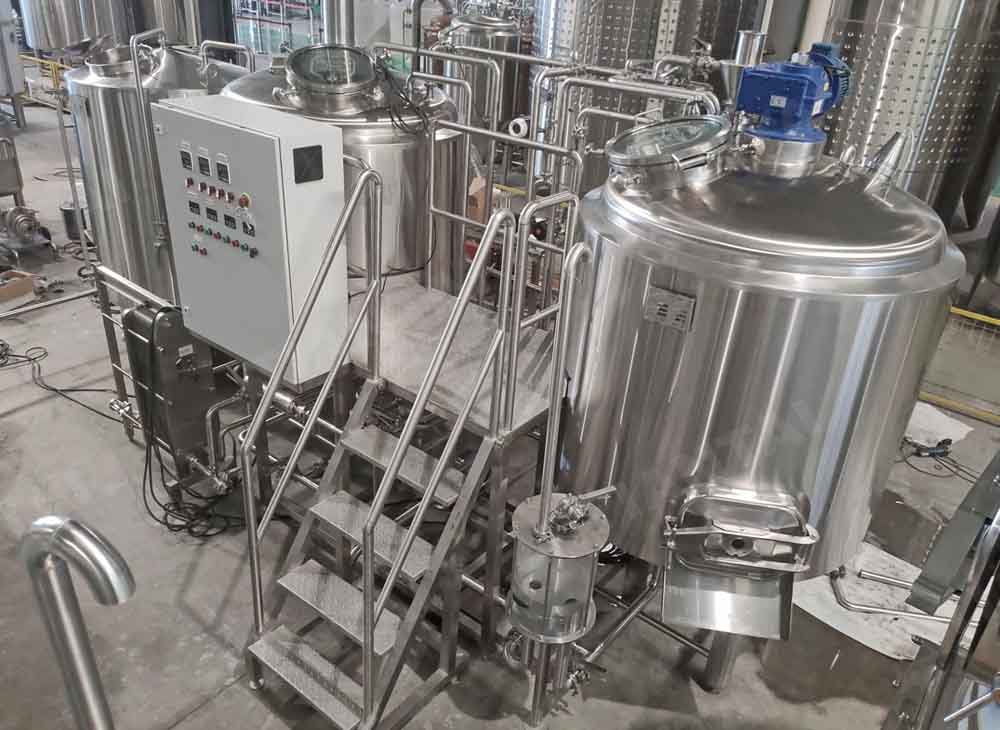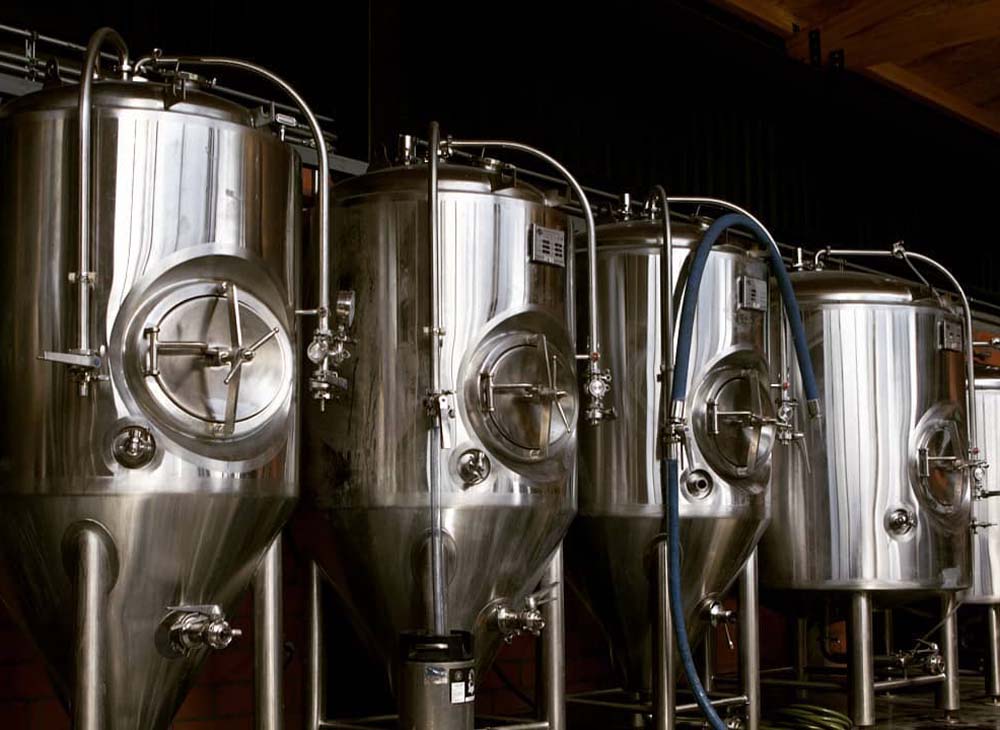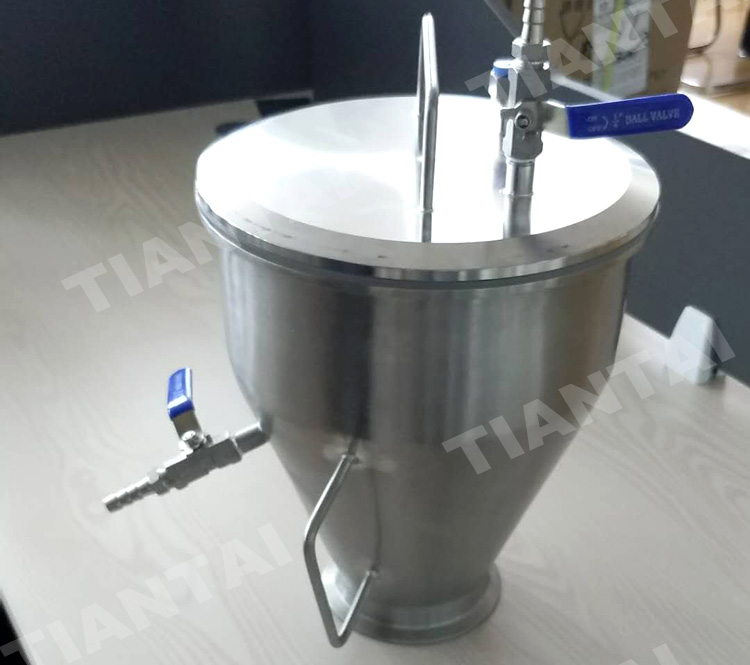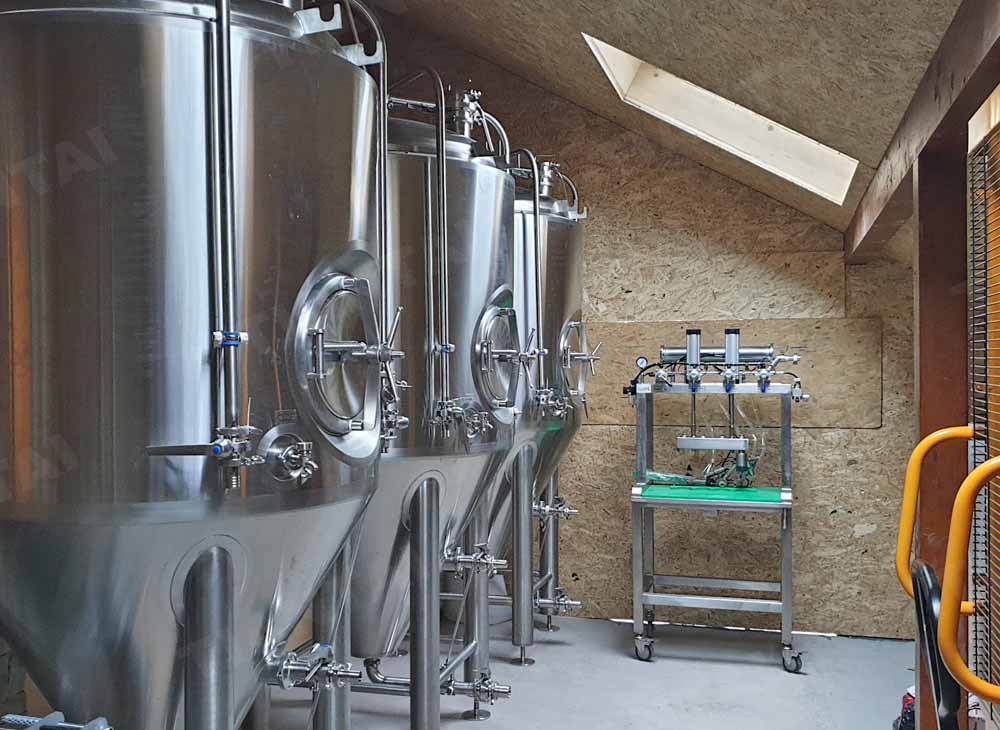Craft beer brewing and micro-brewing Equipment in North America
- Aug 05, 2021
- 60
- tiantai
A craft beer brewery or microbrewery is a brewery that produces small amounts of beer, typically less than large breweries, and is often independently owned. Such breweries are generally perceived and marketed as having an emphasis on enthusiasm, new flavours, and varied brewing techniques. Tiantai beer equipment can supply craft brewing equipment for sale, craft brewing equipment, craft brewery equipment for sale. The craft brewery equipment includes brewhouse, beer fermentation tank, bright beer tank, chiller, bottling machine etc. North America has a long history for the Craft brewing and micro brewing equipment. So let us talk more about this craft brewery development in North America.


Canada
By the early 1980s, 97% of Canadian beer was produced by Labatt and Molson. The first microbrewery was the short-lived Horseshoe Bay Brewery, which was opened in 1981 by Frank Appleton and John Mitchell next to the Troller Pub in North Vancouver. It closed after a year, but Mitchell and Appleton, along with Paul Hadfield, opened the Spinnaker Brewpub in Victoria in 1984. A number of other microbreweries subsequently opened between 1984 and 1987, including Granville Island (Vancouver), Big Rock (Calgary), Brick (Waterloo, Ontario), Upper Canada (Toronto), and Wellington County (Guelph, Ontario).
Over the next twenty years there was steady if not spectacular growth, and by 2006 there were 88 small breweries across Canada, most of them in British Columbia, Québec and Ontario. In the second decade of the century, breweries began to appear in every province at an exponential rate, and by 2018, there were over 700 breweries across Canada producing more than 20 million hectolitres. Several provinces have associations representing craft brewers, including the Ontario Craft Brewers (OCB), and the BC Craft Brewers Guild. Since it is a provincial, not a federal, responsibility to regulate the sale of alcohol, the exact definition of small brewery, microbrewery, macrobrewery and nanobrewery, which is defined by the number of hectolitres produced, varies from province to province.
Several of the more successful microbreweries have been bought by MolsonCoors, AB InBev, and Sapporo, including Granville Island (Vancouver), Mill Street (Toronto), and Creemore Springs (Creemore, Ontario); although the new owners often claim that these operations are still craft breweries, their membership in the relevant provincial craft brewers' association is immediately terminated due to rules requiring independent ownership.
Mexico
In the 1990s craft beer began being produced and consumed in central Mexico, with the trend spreading throughout the country. The main producers are in Baja California, Jalisco and Mexico City. Most beer produced is exported to the United States, and the development of the craft beer industry was not aided by the presence of two large beer consortia in the country. In 2009, craft beer accounted for only 0.05% of total production. The National Association of Craft Beer Producers (Asociación Nacional de Creadores de Cerveza Artesanal) was established to support and promote the industry in Mexico.
In the US, homebrewer K. Florian Klemp wrote in 2008 that the craft beer movement was revived in 1965—subsequent to an earlier American era—when Fritz Maytag acquired the Anchor Brewing Company in San Francisco, thereby saving it from closure. American craft beer drinkers tend to have higher average incomes and demographically skew white, male, and generation X; however trends show an increasingly racially and ethnically diverse, female, and millennial demographic profile.
In a June 2014 interview, the owner of an Oregon-based microbrewery explained: "You've got to do more than just make great beer. It's really about innovation, creativity—stepping outside the box of traditional beer marketing", while an employee explained that "heart and soul" is the essence of the operation.
The turnaround of the Anchor Brewing Company in 1965, after it was acquired by Maytag, is considered a turning point for American beer, due to the revival of craft beer in the US, where microbrewing boomed after then-president Jimmy Carter de-regulated the beer market in 1979. During the same period, others turned to homebrewing and eventually a few of these brewers started to produce on a slightly larger scale. For inspiration, they turned to the centuries-old tradition of artisan beer and cask ale production that was continuing in the UK, Germany and Belgium.
The New Albion Brewing Company was founded in 1976 and served as a blueprint for American brewers to build small-scale commercial breweries. The popularity of these products was such that the trend quickly spread and a large number of small breweries were founded, often attached to a bar (known as a "brewpub") where the product could be sold directly. As microbreweries proliferated, some became more than microbreweries, necessitating the creation of the broader category of craft beer.[citation needed]
Microbreweries, regional breweries, and brew pubs per capital
American microbreweries typically distribute through a wholesaler in a traditional three-tier system, others act as their own distributor (wholesaler) and sell to retailers or directly to the consumer through a tap room, attached restaurant, or off-premises sales. Because alcohol control is left up to the states, there are many state-to-state differences in the laws.[85] Following the federal US government shutdown on October 1, 2013, craft beer producers were forced into an activity lull due to the closure of the Alcohol and Tobacco Tax and Trade Bureau (TTB), an arm of the Treasury Department. The TTB is responsible for granting approval for new breweries, recipes, and labels.[86] Interest spread to the US, and in 1982, Grant's Brewery Pub in Yakima, Washington was opened, reviving the US "brewery taverns" of well-known early Americans as William Penn, Samuel Adams and Patrick Henry. Growth was initially slow—the fifth US brewpub (BridgePort Brewing Company in Portland, Oregon) opened in 1984, Triple Rock in 1986, but the growth since then has been considerable: the Brewers Association reports that in 2012 there were 2,075 regional craft breweries, microbreweries and brewpubs in the US.
Craft brewing is most established in the US, where changes to US law laid the foundations for the expansion of craft brewing. The 1978 Carter homebrewing law allowed for small amounts of beer and wine, and, in 1979, Carter signed a bill to deregulate the brewing industry, making it easier to start new breweries; although, states could still enact local restrictions. As a result of deregulation, homebrewing became a popular hobby in the 1980s and 1990s, and, in the mid-1990s, homebrewers launched business ventures based on home-based hobby brewing.
In 1979, 89 breweries existed in the US—the Brewers Association reports that in March 2013 a total of 2,416 US breweries were in operation, with 2,360 considered craft breweries (98 percent—1,124 brewpubs, 1,139 microbreweries, and 97 regional craft breweries). By 2015, the number of US craft breweries had grown to over 4,000. Additionally, craft brewers sold more than 15,600,000 US beer barrels (1.83×109 L; 480,000,000 US gal) of beer, which represented approximately 7.8% of the US market by volume. In 2007 the largest American craft brewery was the Boston Beer Company, makers of Samuel Adams.The West Coast has the most craft breweries and the Deep South has the fewest.
The Brewers Association defines American craft brewers as "small, independent and traditional": "small" is defined as an "annual production of 6 million barrels of beer or less"; "independent" is defined as at least 75% owned or controlled by a craft brewer; and "traditional" is defined as brewing in which at least 50% of the beer's volume consists of "traditional or innovative" ingredients. This definition includes older microbreweries, which traditionally produce small quantities of beer, as well as other breweries of various sizes and specialties.
The Brewers Association defines four markets within American craft brewing: microbreweries, with an annual production less than 15,000 US beer barrels (1,800,000 L; 460,000 US gal); brewpubs, which sell 25% or more of their beer on site; regional craft breweries, which make between 15,000 US beer barrels (1,800,000 L; 460,000 US gal) and 6,000,000 US beer barrels (700,000,000 L; 190,000,000 US gal), of which at least 50% is all malt or contains adjuncts that are used only to enhance flavor; and contract brewing companies, which hire other breweries to make their beer.
In March 2014, the Brewer's Association (B.A.) updated the definition of craft beer to remove any references to the use of adjuncts in the brewing process. The change allows long-established breweries, such as Yuengling, to be defined as craft beer. The B.A. statement read:
The idea that brewers who had been in business for generations didn't qualify as "traditional" simply did not cohere for many members. Brewers have long brewed with what has been available to them. (Since the Brewers Association doesn't define craft beer—that idea remains up to the beer drinker—the definition doesn't differentiate on what type of beer craft brewers brew, as long as the majority of what they make is beer.) The revised definition also provides room for the innovative capabilities of craft brewers to develop new beer styles and be creative within existing beer styles. The revised definition removes the subjective assessment by Brewers Association staff of whether adjuncts "enhance" or "lighten" flavor in a particular beer.
The B.A. decision also included an updated mission statement and market share goals for the industry. Association members committed to strive for a goal of 20 percent market share by the year 2020 and Gary Fish, owner of Deschutes Brewery and 2014 chair of the BA Board, explained:
The 20-by-20 objective is an aspirational goal for our craft community, with an inspiring symmetry. I'm convinced this goal is within our reach if we, as an industry, continue to focus on our strengths and passions—making and delivering high-quality, innovative, full-flavored beer to craft beer enthusiasts. ... Additionally, by noting a commitment to quality and clarifying the place of homebrewers and brewing enthusiasts, we further acknowledge the critical role each plays in the health and growth of the craft brewing industry.
The Brewers Association reported the production of craft beer has doubled between 2011 and 2016, with the number of breweries growing from 2,000 in 2011 to 5,200 in 2016. The craft breweries are also seeing an increase in beer tourism, seasonal brews, and a marketing effort to get more women involved in beer production. However, a study of Portland has suggested that the rise in microbreweries is related to gentrification.
Derrick
Sales Manager
[email protected]
Tiantai Beer Equipment
Derrick
Sales Manager
[email protected]
Tiantai Beer Equipment

.jpg)


